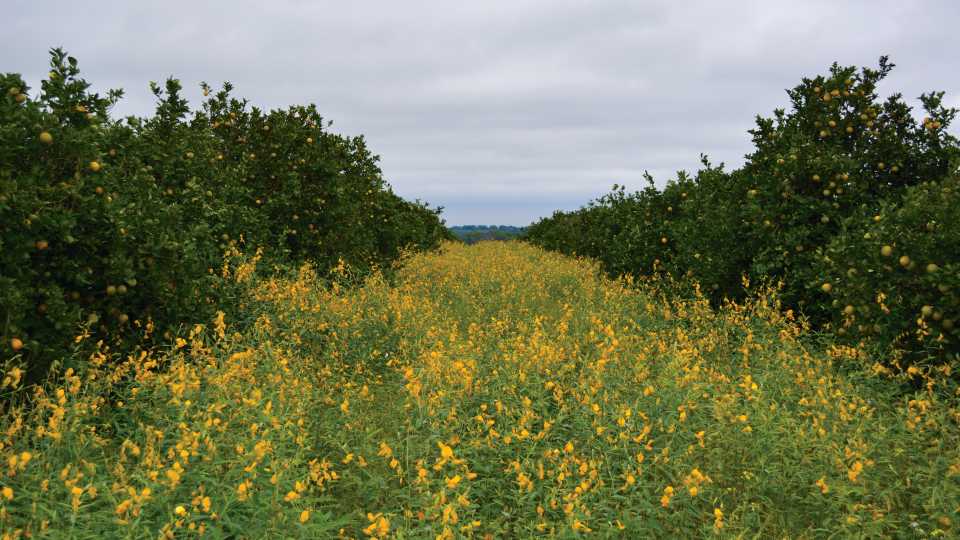
In an effort to bolster citrus nutrition, some Florida growers are using cover crops to encourage soil biology in groves.
Photo by Frank Giles
The thinking on citrus nutrition has evolved over the years, especially with the onset of HLB. Keeping infected trees properly fed, whether through ground or foliar applications, has kept some trees more productive as the disease has spread to every grove.
Recently, UF/IFAS announced an update to its “Nutrition of Florida Citrus Trees” guidebook. This third edition comes with revisions reflecting greening and new practices like planting citrus under protective screen, commonly called CUPS.
Dr. Kelly Morgan, Director of the UF/IFAS Southwest Florida Research and Education Center, and Dr. Davie Kadyampakeni, an Associate Professor of Water and Nutrient Management with UF/IFAS, edited the new edition. Kadyampakeni says the original editions lay a good foundation of knowledge.
“The information provided in the 2008 second edition is still sound for healthy citrus trees under Florida production conditions,” Kadyampakeni says. “Much of the information provided in this document on nutrients, application methods, leaf and soil sampling, and irrigation scheduling also are effective for HLB-affected citrus trees. However, research conducted since HLB was detected in Florida in 2005 has established changes in many production practices, including nutrient rates, irrigation scheduling, soil pH management, and the use of CUPS. So, there have been updates made in several chapters.”
Small, More Frequent Doses
The updated manual recognizes and recommends growers consider methods of delivering nutrients in slow, smaller doses that citrus roots can uptake.
“The authors encourage use of fertigation practices and slow or controlled release fertilizers for improving canopy size and root health,” Kadyampakeni says. “The guide also encourages growers to use frequent, daily irrigation to increase water and nutrient uptake that can increase yield, canopy size, and root growth.
“With HLB incidence close to 100% in Florida, efforts should be made to make nutrients more available to the weakened root system, and for this, pH should be maintained between 6.0 and 6.5. This ultimately would result in reduction of stress on feeder roots and would increase nutrient uptake and root longevity with improved color and vigor in foliage.”
Soil Biology
Growers are talking more and more about improving soil biology and organic matter. This also has been reflected in the guidebook.
“The guide, in general, encourages growers to apply organic products such as compost,” Kadyampakeni says. “The benefits of adding organic amendments include soil structure improvement, higher water- and nutrient-holding capacity, an additional nutrient source, decreased soil erosion, insulating properties against heat and cold, buffer soil pH, good aeration (which results in better root growth), and an increase in populations of beneficial microorganisms and earthworms.”
BMP Manual Updates
Kadyampakeni says he hopes the recommendations in the third edition will be utilized in the upcoming update of the “Florida Best Management Practices (BMPs) Citrus Manual.” This year’s landmark Clean Waterways Act signed into law just prior to the COVID-19 shutdown will require more frequent updates of the state’s 10 BMP manuals.
According to Kim Shugar, Deputy Director of Water Policy for the Florida Department of Agriculture and Consumer Services (FDACS), the citrus manual will be among the first to be updated. FDACS is the agency that administers the BMP program in the state.
“The citrus manual is included in our general fiscal year 2020-2021 regulatory plan, which means we intend to initiate the rule development process during this fiscal year,” she says. “The process will begin sometime in 2021.”
The manual can be found at https://edis.ifas.ufl.edu/pdffiles/SS/SS47800.pdf.









